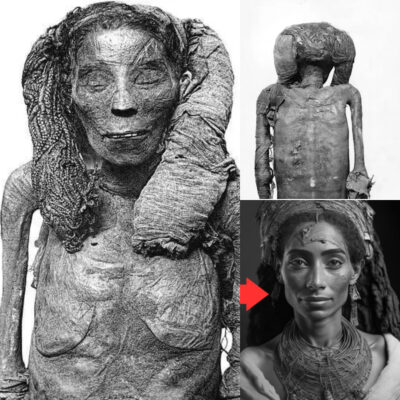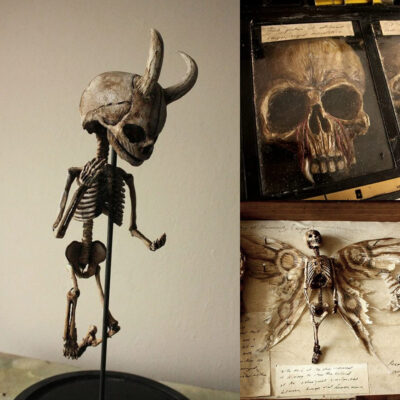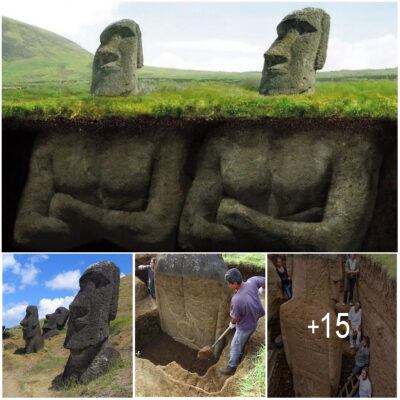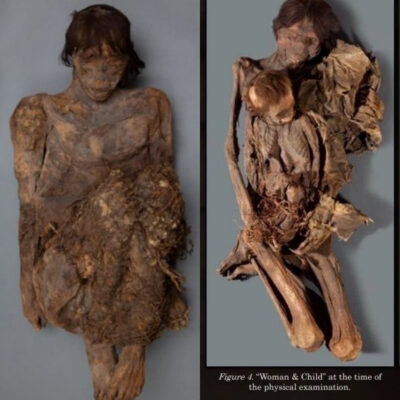Paleontologists Find 450-Million-Year-Old Fossilized Trilobite Eggs
A research team led by Western Illinois University scientist Thomas Hegna has announced the discovery of two pyritized, egg-bearing specimens of the Ordovician trilobite Triarthrus eatoni.

Left: ventrally preserved specimen of the Ordovician trilobite Triarthrus eatoni showing nine eggs in the specimen’s left genal angle; scale bar – 5 mm. Right: close up of the egg-bearing region from the specimen; scale bar – 2 mm (top); scanning electron microscopy (SEM) image of the eggs from the specimen (bottom). Image credit: Thomas A. Hegna et al, doi: 10.1130/G38773.1.
The two egg-bearing specimens of Triarthrus eatoni were found in the Martin Quarry in the Whetstone Gulf Formation in New York, the United States.
“This is not the first time that supposed trilobite eggs have been identified,” Dr. Hegna and co-authors said.
“However, it is the first time that eggs have been positively identified in association with a body fossil. This firmly establishes the identity of the eggs.”

The ancient eggs, described in a report published this month in the journal Geology, are believed to be about 450 million years old (Ordovician period).
“The eggs are spherical to elliptical in shape, nearly 200 μm in size, and are clustered in the genal area of the cephalon,” paleontologists said.
“The structures do not fit alternate interpretations. They are too large to be microbial fossils. Their distribution on the exoskeleton would be puzzling for a type of small epibiont, a fecal pellet, or localized pyrite growth. Thus, the structures more readily fit an egg interpretation.”
“Their size, though small, is within the size range known from other modern and fossil arthropods.”
“Notably, the eggs are somewhat smaller than the earliest growth stage of trilobites, the protaspis.”

The team used a micro CT scanner to get a ‘flipbook of slices’ through the preserved trilobites and eggs.
“We digitally dissected the fossils,” Dr. Hegna said.
“The CT scans help us see if the eggs were attached to the body without disturbing the fossil.”
“The eggs have been observed in clusters of 3 to 9 eggs. This is likely a low estimate; eggs may have been accidentally destroyed during the air abrasion preparation process, or additional eggs may remain hidden in the sediment,” the researchers said.

“The eggs are only visible ventrally with no dorsal brood pouch or recognized sexual dimorphism.”
“While carrying eggs on the head may seem unusual, it is far from unknown in arthropods,” they said.
“In 1998, researchers proposed that trilobites brooded their eggs in anterior cephalic pouches. One of the trilobites’ closest living relatives, the horseshoe crab, carries its unfertilized eggs internally within a prosomal ovarian network within the head, though they do not brood them externally.”
Prior to the team’s discovery, nothing was known about an early phase of the development of trilobites.

“The fact that the eggs are smaller than the earliest-known trilobite ontogenetic (protaspis) stage suggests that trilobites may have had an unmineralized preliminary stage in their ontogeny, and that the protaspis shield formed only after hatching,” Dr. Hegna and co-authors said.
“Trilobites likely released their gametes (eggs and sperm) through a genital pore of as-yet unknown location (likely near the posterior boundary of the head).”
“If the Triarthrus eatoni reproductive biology is representative of other trilobites, they spawned with external fertilization, possibly the ancestral mode of reproduction for early arthropods.”











